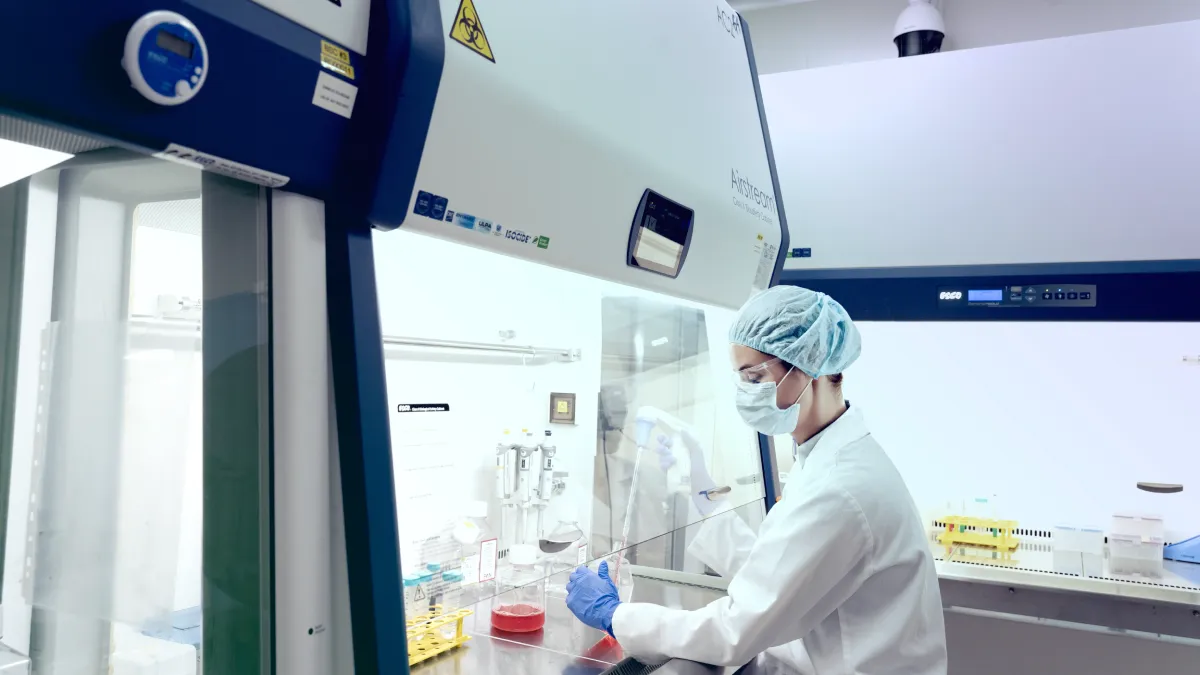Applications
Vaccination Programs
Similar to terrestrial animals, misuse of antibiotics to control these infectious diseases could lead to the generation of antimicrobial resistance (AMR). Fishes may ingest different doses of the antibiotic, which in excess, accumulate in the fish tissue. Organisms in fish tissues under antibiotic stress would be promoted to produce antibiotic resistance genes (ARGs). These would eventually be released to the local aquatic system and facilitated to contaminate nearby farms. Combined with proper farm management through good hygiene and limited stress, vaccination is an important key to combat infectious diseases and reducing AMR generation.
Although part of the global aquaculture, molluscs and aquatic plants do not possess advanced immune system for vaccines to be effective.
An aquatic veterinarian or fish health specialist/professional should be consulted to determine the appropriate licensed vaccines to use and also when developing autogenous vaccines for specific pathogen and fish farm.
Common Diseases/Pathogens affecting Aquaculture Industry
| Bacterial | Viral | |
|---|---|---|
|
Fishes 
|
Aeromonas hydrophila Aeromonas salmonicida Flavobacterium pyschrophilum Lactococciosis Moritella viscosa Pseudomonas fluorescnes Photobacterium Renibacterium salmoninarum Streptococciosis Tenacibacullum maritimum Vibrio anguillarum Vibrio salmonicida Yersinia ruckeri Edwardsiella ictaluri |
Infectios haemopoietic necrosis virus (IHN) Infectious pancreatic necrosis virus (IPN) Infectious salmon anemia virus (ISAV) Lymphocystis disease virus (LCDV) Nodavirus infection (VER) Red Seabream Iridovirus (RSIV) Channel catfish virus disease (CCV) Spring viermia of carp (SVCV) Grass carp hemorrhage disease (GCHDV) Pancreas disease virus (PDV) Salmon pox Viral haemorrhagic septicemia virus (VHSV) Viral nervous necrosis/SJNNV |
|
Shrimps/Prawns 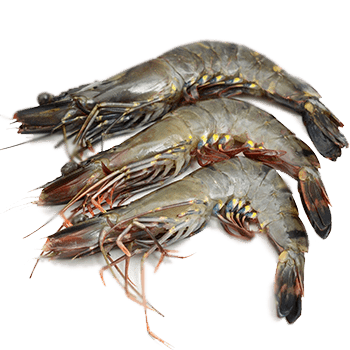
|
Necrotizing hepatopancreatitis (NHP) Vibrio (V. alginolyticus, V. costicola, V. harveyi, V. splendidus, and V. parahaemolyticus) Photobacterium |
White spot syndrome virus (WSSV) White spot baculovirus (WSBV) Taura syndrome virus (TSV) Yellowhead virus (YHV) Infectious hypodermal and haematopoietic necrosis virus (IHHNV) Enterocytozoon hepatopenaei (EHP) Early Mortality Syndrome (EMS) or Hepatopancreatic Acute Necrosis Syndrome (AHPND) Hepatopancreatic parvovirus (HPV) |
Aquaculture vaccination is usually administered in small juveniles/larvae and revaccination may be needed depending on possible outbreaks on nearby areas and the long-term protection of vaccines.
In addition to hygiene and stress, species variety and temperature also affects the effectiveness of the vaccine administered. Some species differ eliciting immune response effective for a given fish pathogen. Seabass, including barramundi, acclimated to warm temperatures have detectable antibodies after one week of immunization

Pangasius/Catfish vaccination
Bacteria such as Edwardsiella ictaluri commonly causes the disease outbreaks in neighboring farms of Pangasius fisheries as these share the same water sources. Antimicrobials have been used by farmers/farm owners to manage these outbreaks. However, these are potential food safety hazards (chemical residues) when traces remain in catfish products in the market. Vaccine development is imperative to reduce reliance on antimicrobials and promotes food safety practices. Farmers, however, do take into consideration to added costs of vaccines due to labor and materials. Thus, the cost of vaccination should be lowered with the use of high-yielding technologies.
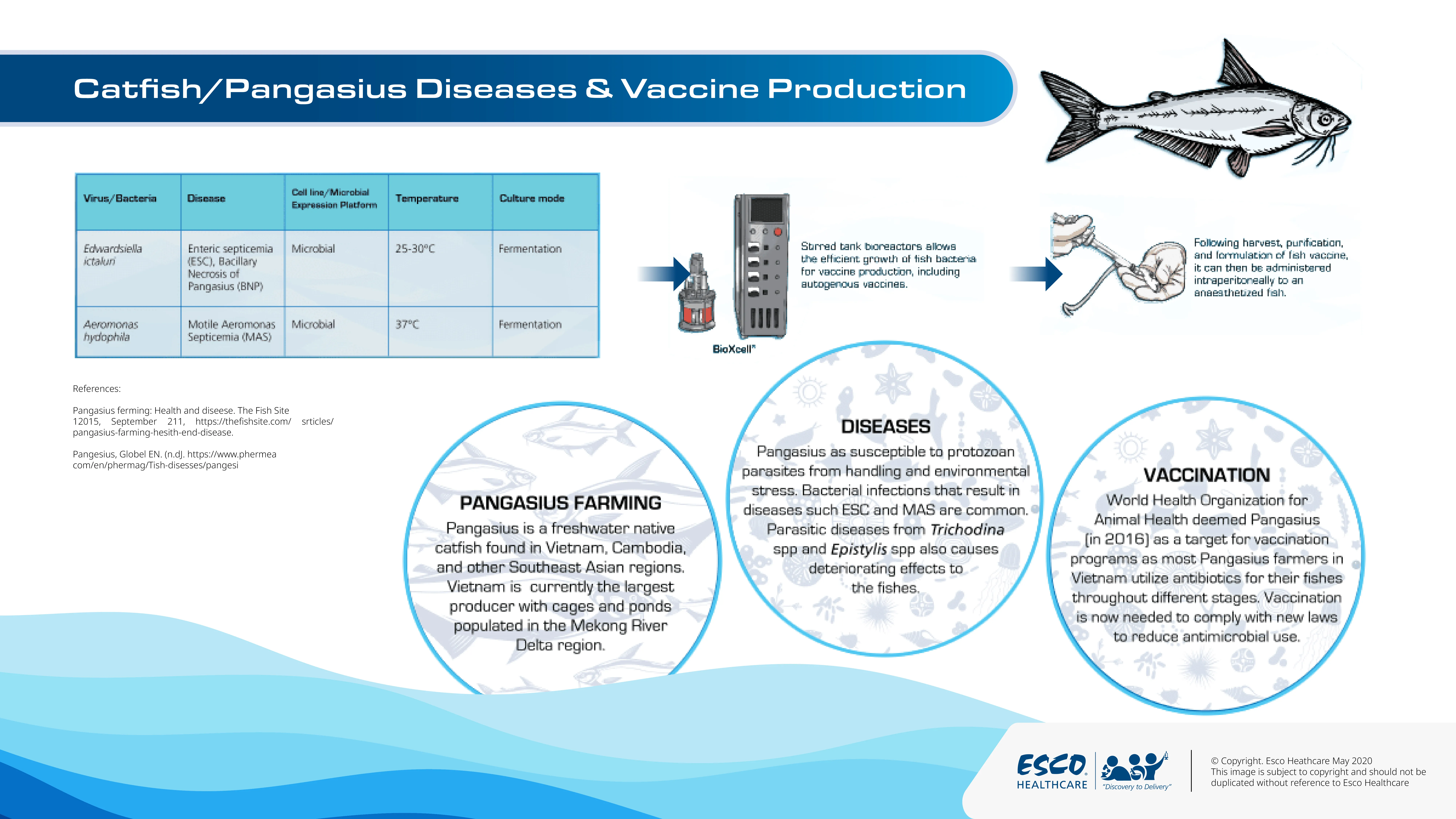
Salmon vaccination
The availability of effective commercial vaccines against salmon diseases allowed the ~1000% increase of fish harvest in tons from 1987 to 2007. This also evident in the reduction of ~1200% for antibiotic consumption for the same period
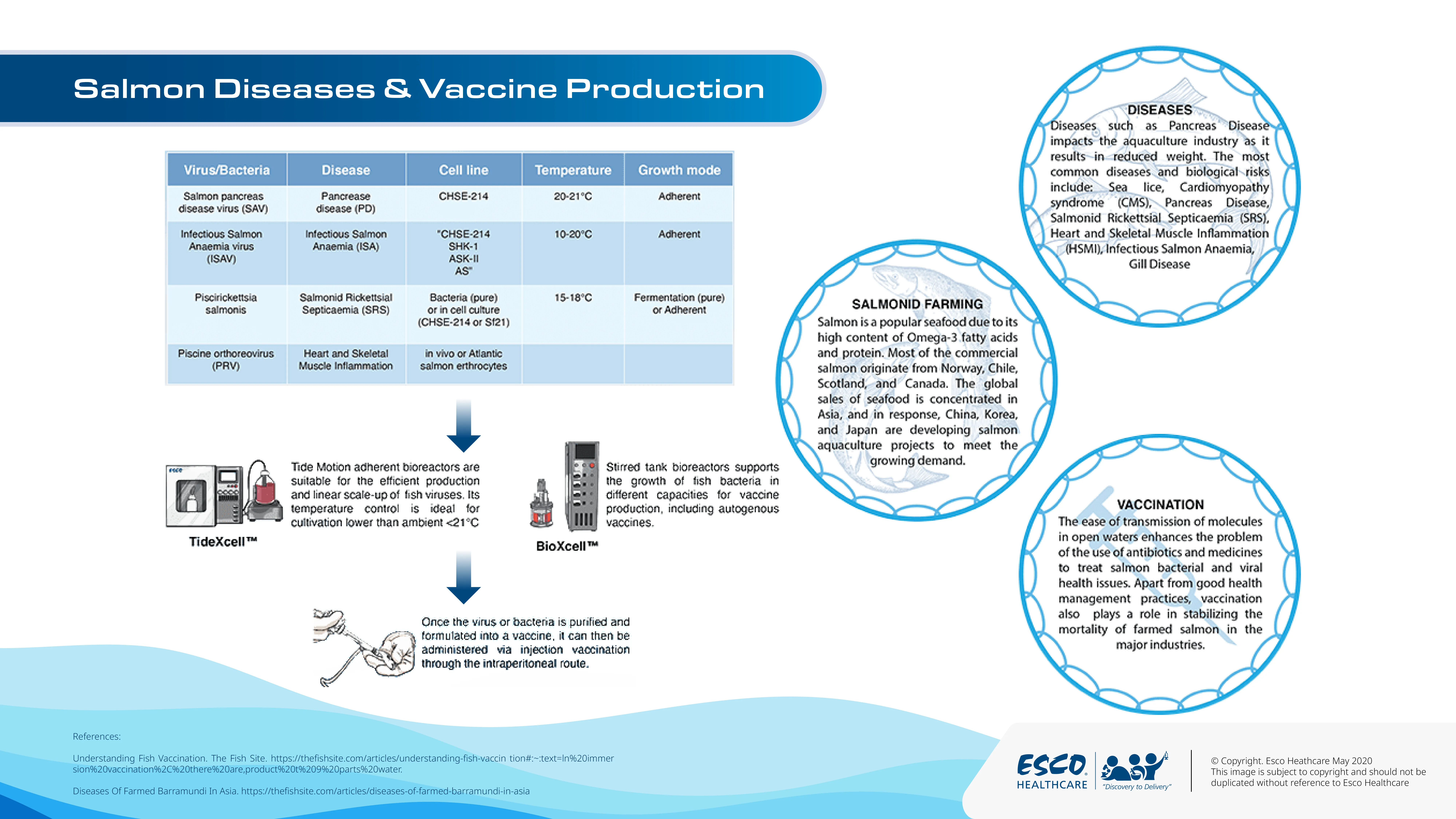
Oil-based injection vaccines which dominate today’s salmon industry are mostly produced in adherent cell culture. Esco VacciXcell bioreactors, CelCradle™ and TideXcell®, provide the enviroment (equipped with robust temperature control) for efficient growth of fish vaccine adherent cell lines such as CHSE-214 and Sf21. The increased cells then allow for higher yield of viruses. Esco VacciXcell also offers stirred tank bioreactors with temperature control mechanism, including BioXcell®, capable of expanding various fish pathogen bacteria.
Esco VacciXcell bioreactors temperature control for aquaculture vaccines :
| Tide Motion Bioreactor | To achieve <20°C |
|---|---|
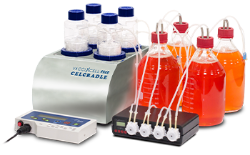 CelCradle™
CelCradle™
|
For aquaculture vaccine production using microbial hosts, CelCradle™ can be placed inside the Esco Isotherm® Refrigerated Incubators to achieve low temperature incubation. 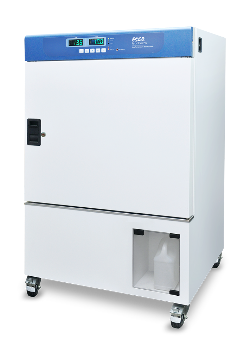
Mammalian cell lines for fish vaccines production that require CO2 control (i.e., CHSE-214 ) can be cultured in CelCradle™ placed inside Esco CelCulture® CO2 incubators with integrated cooling system. 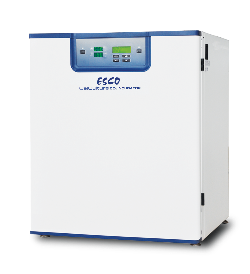
|
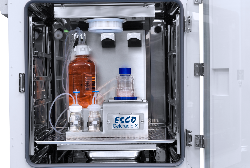 CelCradle X®
CelCradle X®
|
CelCradle X® standalone bioreactor can operate under 20°C as low as minus 8°C from ambient temperature. |
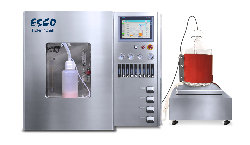 TideXcell®
TideXcell®
|
The TideXcell® incubation and control system can provide temperature incubation for less than 20°C. Glass, single-use, SIP stainless steel mixing vessel is double jacketed and connected to chiller to also keep the media cool. |
References:
- Gravningen, K., Berntsen, J., Authors, Kjersti Gravningen PHARMAQ A.S. Harbitzalléen 5 0213 Oslo, & [111. (2019, July 11). Fish vaccination: Success with salmon expanding " Global Aquaculture Advocate. Retrieved November 19, 2020, from https://www.aquaculturealliance.org/advocate/fish-vaccination-success-with-salmon-expanding/
- Mutoloki, S., Munang'andu, H. M., & Evensen, Ø. (2015). Oral Vaccination of Fish - Antigen Preparations, Uptake, and Immune Induction. Frontiers in immunology, 6, 519. doi:10.3389/fimmu.2015.00519
- Phu, T. M., Phuong, N. T., Dung, T. T., Hai, D. M., Son, V. N., Rico, A., … Dalsgaard, A. (2015). An evaluation of fish health-management practices and occupational health hazards associated with Pangasius catfish (Pangasianodon hypophthalmus ) aquaculture in the Mekong Delta, Vietnam. Aquaculture Research, 47(9), 2778–2794. doi:10.1111/are.12728
- Salama, N.K., & Murray, A.G. (2011). Farm size as a factor in hydrodynamic transmission of pathogens in aquaculture fish production.
- Siripornadulsil S., Dabrowski K., Sayre R. Microalgal vaccines. Adv. Exp. Med. Biol. 2007;616:122–128
- Sommerset I., Krossøy B., Biering E., Frost P. Vaccines for fish in aquaculture. Expert Review of Vaccines. 2005;4(1):89-101.
- Use of Vaccines in Finfish Aquaculture. The Fish Site. https://thefishsite.com/articles/use-of-vaccines-in-finfish-aquaculture





